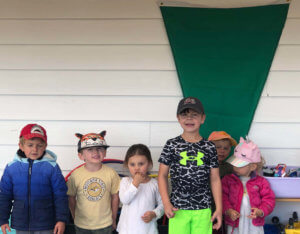Raise the Flag for Clean Air in Montana
“What causes dirty air?” asks the guest lecturer in a rural Montana classroom. “Fires” replied one student. “Cars” says another, quietly. “Fossil fuels” states another, confidently.


Members of Montana Health Professionals for a Healthy Climate are going into schools and even preschools to talk about clean air this fall. They received a grant from the American Academy of Pediatrics (CATCH Grants) and the Region 8 Pediatric Environmental Health Specialty Unit to increase school adoption of the E.P.A Air Quality Flag Program. Wildfires and winter inversion layers lead to frequent poor air days in Montana, even while ozone is not an issue.
The speakers have lived and practiced medicine in Montana for many years. In their experience in many rural communities, discussing climate change is not the way to reach people. They felt that an action that allows discussion on the importance of clean air for our health could be a first step in these communities.
When a school or business or NGO adopts the flag program, someone in the facility checks airnow.gov daily and a student (or other person) raises a colored flag that corresponds to the air quality. (green is clean – to yellow, orange, red, and purple – the worst). Frequently, a science class or the ‘student of the week’ or a student with disabilities gets to raise the flag. The flags provide a visual to the community, and materials are available when community members ask at the school about the meaning of the flags. In Montana, a submission to the local paper is sent after the program begins in that town, to further increase visibility.
The pediatricians go into the school to teach a class or an assembly of students about the effects of air pollution on our health at the onset of the program. Their grant allows them to provide flags, poles, written information, and air monitors for remote schools with no nearby monitors. For the tens of thousands of square miles in NE Montana, there are only a couple official monitors so personal, “PurpleAir” monitors can really help a community and a school know when conditions are not safe. Some science teachers are incorporating data collection from the monitor into their science curriculum to help meet the science standards.
Montana Health Professionals for a Healthy Climate want to reach out to rural and conservative communities with climate action, and this program has allowed them to begin doing so.


Lori Byron is a general pediatrician and chair of Montana Health Professionals for a Healthy Climate. She is an active member of the American Academy of Pediatrics, a partner of Climate for Health.